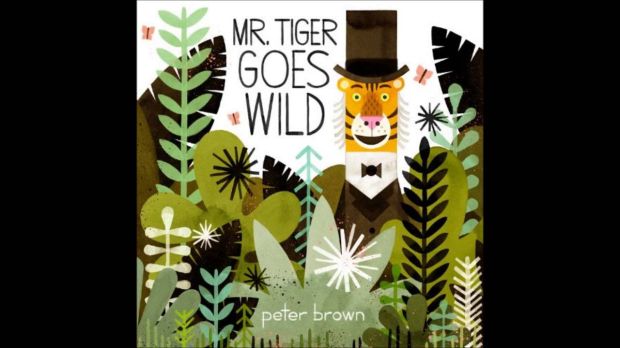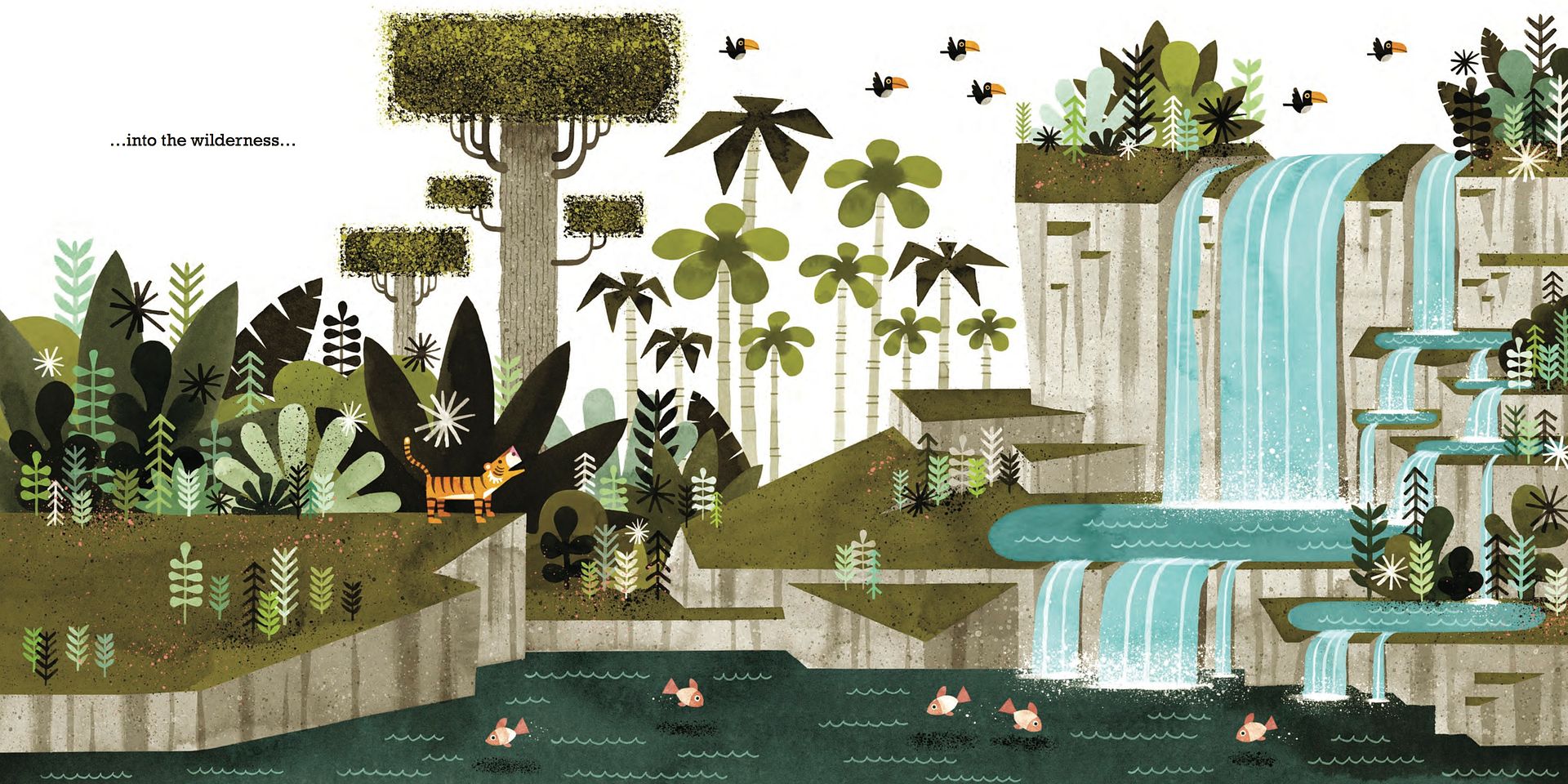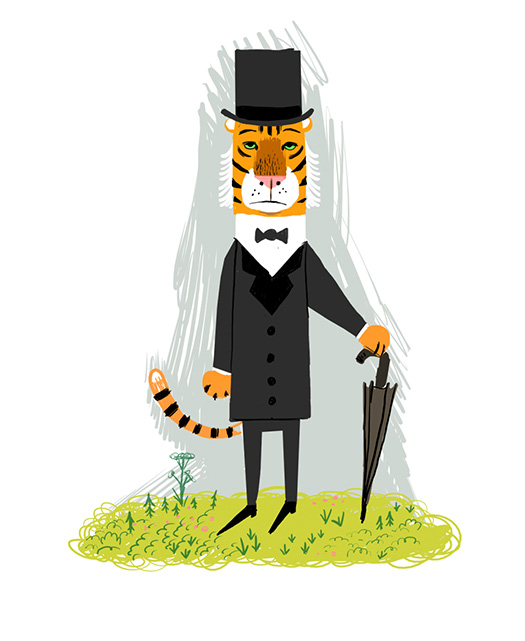
by Sam Juliano
If ever a picture book was tailor-made to win a Caldecott Medal, Peter Brown’s Mr. Tiger Goes Wild pushes all the right buttons. First off, the esteemed author-illustrator won a Caldecott Honor last year for his pencil colored illustrations to the spook themed Creepy Carrots, written by Aaron Reynolds. The general rule of thumb is that one or more silver medals usually leads to the gold, but like all other awards it invariably is contingent on timing and the strength of the competition. There is also the little matter of “taste,” which more often than not divides those teachers, librarians and book fans who annually express some issues with the final edict. Such was certainly the case two years ago when the association inexplicably gave the Caldecott Medal (for the second time) to abstract artist Chris Raschka for the lightweight A Ball for Daisy, just a few years after he had won his first gold medal for The Hello Goodbye Medal. Raschka’s win shocked many, since the same year featured one of the most beautifully illustrated books ever published with Lane Smith’s Grandpa Green.

In any case, Brown, who made his first serious impression in the children’s book world with his 2009 A Curious Garden, has upped the ante considerably with an irresistible, often gorgeous collaboration of India ink, watercolor, gauche and pencil, all then digitally composited and colored in the same manner as his previous, aforementioned works. The color orange in particular, is used to striking effect throughout, lending acute coordination and balance as a counterpoint to the purposefully drab surroundings that define the tiger as a proper but stuffy gentleman. Brown has emulated a Victorian society, where the ‘animal as humans’ adhere to a rigid behavioral code, often exchange terse salutations. As drawn by Brown, Mr. Tiger is mango-toned with green eyes and seems to be disillusioned with the the flavorless machinations of every day life. Certainly his physicality contrasts with the ashy browns and neutral whites the author-illustrator has employed to denote the daily ennui associated with strict adherence to convention. Indeed Brown writes: “Everyone was perfectly fine with the way things were” in a marvelous two-page spread displaying exaggerated animal figures riding bikes and walking with there eyes literally and figuratively closed. In their midst is the central character whom Brown continues “….everyone but Mr. Tiger.” (see below) Brown effectively uses bubbles for dialogue, again contrasting brown with orange. Mr. Tiger really wants to loosen up, have fun and be wild. He very first foray on all fours is looked on with clueless dismay by the others, who later flee when the tiger begins to strut his stuff, jungle-style. One elephant urges him: “If you must act wild, kindly do so in the wilderness.”

In a series of breathtaking double-pagers, the first showcasing a waterfall, with jungle ornamentation Brown chronicles the metamorphosis, as Mr. Tiger roars with the best of them and becomes one with his surroundings, ruling his domain with fierce confidence and authority. Yet, as was also the case in Arthur Yorinks’ Caldecott winner Hey Al (ill. by Richard Egielski) there is an onset of homesickness to be reckoned with, and Mr. Tiger clearly misses his friends and hometown. Inevitably he returns home, and is enthusiastically greeted by all his old legions, but there’s a change, one that is emulated by others who see the benefits of deviating from the norm.

Mr. Tiger Goes Wild offers up a simple theme and message in strikingly original art that is both economical and appealing to children, who will pick up the humorous nuances and Brown’s urging that every should loosen up. There is always an inherent appeal in a stuff shirt letting it all hang out, and while kids will pick up this romp with gleeful menace, adults will find the illustrations wholly ravishing, with just the right touch of subversion. In recent years the American Library Association has been awarding their Caldecott Medals to either wordless books or others like Mr. Tiger Goes Wild that are fueled and dominated by the art. One of the most charming books in years, this would appear to be the favorite to capture the Caldecott Medal, but it will surely at the very least bring Brown a second Honor.

Note: This is the second installment in a series devoted to Caldecott Medal and Honor hopefuls to be announced in January of 2014.
